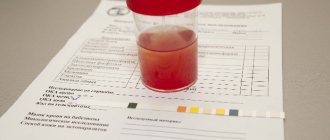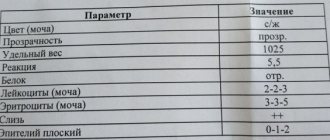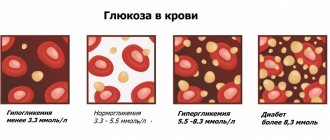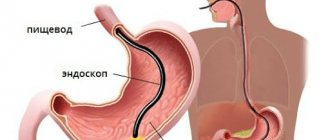Zimnitsky's test is a basic urine test that provides information about the condition of the kidneys. During the study, the volume and density of urine excreted by the body during the day is checked, and material is collected according to a special scheme. Diagnostics are prescribed when there is a suspicion of the development of renal failure and other kidney diseases, including inflammatory ones.
What is the Zimnitsky test?
Urine examination according to Zimnitsky makes it possible to assess the functional ability of the kidneys for osmotic dilution and concentration. The technique is relatively simple and accessible. Urine collection is carried out for 1 day with an interval of three hours. The resulting eight portions are evaluated individually and jointly.
The analysis can be prescribed on an outpatient basis or performed in a hospital setting. It is most often used by therapists, urologists, nephrologists and cardiologists. Sample decoding according to Zimnitsky does not require unique equipment, so it can be performed in almost any large laboratory.
Interpretation of the result
At the medical office, you can get personal advice from a doctor from the “Doctor Q” service on interpreting the results of the study during your appointment or by phone.
It must be remembered that interpretation of the results of a urine test according to Zimnitsky should only be carried out by a doctor, since the results of laboratory tests are not the only criterion for making a diagnosis and prescribing appropriate treatment. They should be considered in conjunction with medical history and the results of other possible examinations, including instrumental diagnostic methods.
An adult normally excretes approximately 67–75% of the liquid he drinks during the day. Daytime diuresis should exceed nighttime and amount to 2/3–3/4 of the total amount of daily urine. The relative density during the day ranges from 1.005 to 1.025 g/ml.
If night diuresis predominates over daytime diuresis, then this indicates a decrease in the concentrating ability of the kidneys. Nocturnal predominance of diuresis is often found in diabetes insipidus and heart failure.
An excess of urine density above 1.025 g/ml is observed in cases of dehydration, pyelonephritis, and uric acid diathesis in children.
A decrease in urine density below 1.005 g/ml indicates a decrease in the concentration function of the kidneys and occurs in renal failure, chronic glomerulonephritis and pyelonephritis, diabetes insipidus and diabetes mellitus, hyperaldosteronism, while taking diuretics, severe potassium deficiency, excess calcium,
To confirm the resulting pathological abnormalities, the doctor may prescribe stress tests to the patient to dilute and concentrate urine.
Indications for prescribing the Zimnitsky test
This study is prescribed in the following cases:
- for the primary diagnosis of diseases of the urinary tract, cardiovascular system, pancreas and other organs;
- when the color of the urine changes (cloudy, too concentrated or clear);
- for control of chronic diseases (glomerulonephritis, pyelonephritis, diabetes mellitus and diabetes insipidus, renal, liver and heart failure, hypertension, etc.);
- if you complain of aching pain in the lumbar region, difficulty urinating, swelling, etc.;
- if the general urinalysis has pronounced deviations.
The study may also be recommended for patients taking diuretics for a long time, receiving parenteral nutrition, who have recently undergone an X-ray examination of the urinary system with contrast, and in some other cases. If urine collection and analysis are performed correctly, the doctor receives complete information about the functioning of the kidneys, the state of their filtration and excretory functions.
Relative density of urine
Hyposthenuria
– low urine density (in none of the portions does the urine density exceed 1.012–1.013 g/ml) indicates a violation of the concentrating ability of the kidneys, the cause may be:
- chronic renal failure;
- heart failure;
- diabetes insipidus.
Hypoisosthenuria
– the density of urine in each portion of Zimnitsky’s test does not exceed 1.009 g/ml and practically does not change throughout the day. The cause may be severe kidney failure.
Hyperisosthenuria
– constantly high specific gravity of urine, the cause may be:
- diabetes;
- acute or chronic glomerulonephritis;
- toxicosis of pregnant women;
- nephrotic syndrome.
Preparation for the procedure
The Zimnitsky test does not require special preparation. On the eve of the study, the medical professional explains in detail to the patient how to properly collect biological material. The analysis is carried out against the background of the abolition of all diuretics. Drinking and eating regimen remains unchanged.
The patient is given 8 sterile containers for urine. On each one they write the patient’s name, portion number and collection time (from 6 to 9 o’clock, from 9 to 12, and so on until six in the morning of the next day). If the test is carried out in a hospital, indicate the ward and department in which the patient is located. Additionally, 1-2 containers are given in case there is too much urine for the person to completely empty the bladder into the reservoirs for examination.
The patient is recommended to use an alarm clock, which will warn him every 3 hours about the deadline for collecting the next portion. A notepad is required. During the day, a person writes down the amount of liquid he drinks. This will allow laboratory physicians to assess overall urine output.
Detailed description of the study
24-hour urine test to analyze the concentrating ability of the kidneys.
The main function of the kidneys is to maintain an optimal balance of fluids and electrolytes in the body. To do this, the organ concentrates or, on the contrary, “dilutes” urine.
If the functional abilities of the kidneys are normal, significant fluctuations in the volume and density of urine are observed during the day, as well as a clear predominance of daytime diuresis over nighttime diuresis by at least 2 times.
A change in the amount or density of urine may indicate kidney pathology.
Change in the amount of urine:
- Polyuria - excretion of more than 2 liters of urine per day, regardless of the amount of fluid drunk
- Oliguria - excretion of less than 0.5 liters of urine per day
- Anuria - complete cessation of formation or excretion of less than 0.2 liters of urine per day
Changes in the relative density of urine: The following changes in the relative density of urine are distinguished.
- Hypersthenuria - an increase in the relative density of urine more than 1.030
- Hyposthenuria - decrease in density below 1.010
- Isosthenuria is a condition in which the relative density of urine remains virtually unchanged throughout the day.
Hypo- and isosthenuria indicate a violation of the concentrating ability of the kidneys.
The concentration function of the kidneys suffers earlier than other functions, so a urine test according to Zimnitsky allows one to identify pathological changes in the kidneys long before the onset of symptoms of renal failure.
Carrying out a test
The essence of the test is to dynamically determine the relative density and amount of urine in three-hour portions during the day.
To conduct the Zimnitsky study, 8 portions of urine are collected, including at night:
First - from 6 to 9 am Second - from 9 to 12 o'clock Third - from 12 to 15 Fourth - from 15 to 18 Fifth - from 18 to 21 Sixth - from 21 to 00 o'clock Seventh - from 00 to 00 3 am Eighth - from 3 to 6 am
On the first day of collection, you need to go to the toilet at 6 am - this portion of urine will not be included in the daily study. Then, for each three-hour interval, you start and sign your own container - you will need to urinate in them in strict accordance with the time intervals.
To carry out the analysis, the total volume of urine in each portion is measured, after which 50 ml of urine is taken from each container for laboratory testing.
It is important to record and then report to the laboratory the volume of liquid consumed per day.
Research stages
The analysis is carried out within 24 hours. At 6 am the patient wakes up to an alarm clock (in the hospital a nurse wakes him up). Weight is measured. The patient then urinates in the toilet. All subsequent portions of urine are collected in prepared sterile containers, strictly every 3 hours. If the patient cannot go to the toilet during a certain period of time, a mark is made on the corresponding container: 0 ml. When using an additional container, an inscription is left on it - for example, Petrov V.V., Zimnitsky sample, portion V, 18-21, 150 ml.
The tanks filled with urine are immediately tightly closed and placed in a cool place with a permissible temperature of +2 to +24°C. The test ends at 6 am, when the patient collects the last portion of urine and performs weight control. All containers are taken together and sent with a completed directions and notepad to the laboratory. There, the analysis takes 1-3 days.
Urine analysis according to Zimnitsky
Urine analysis according to Zimnitsky
— the study is designed to assess the concentration function of the kidneys, i.e. their ability to concentrate and dilute. Urine for analysis is collected within 24 hours. During the test, the daily, day and night amounts of urine and the relative density of urine in each of the 3-hour portions (8 portions in total) are determined.
Normally, in an adult, fluctuations in the volume of urine in individual portions range from 40 to 300 ml. Fluctuations in the relative density of urine between the maximum and minimum values should be at least 0.012–0.016 g/ml. Significant daily fluctuations in relative density are associated with the preserved ability of the kidneys to concentrate and dilute urine depending on the constantly changing needs of the body.
Normal renal concentration function is characterized by the ability to increase the relative density of urine during the day to maximum values (over 1020 g/l). Normal dilution ability is the ability to reduce the relative density of urine below the osmotic concentration of protein-free plasma, equal to 1010–1012 g/ml.
Indications:
- signs of renal failure;
- chronic glomerulonephritis, pyelonephritis;
- hypertonic disease;
- diagnosis of diabetes insipidus.
Preparation After
waking up at 6:00 am, the patient urinates in the toilet. Then you need to record the time of the first urination. After this time, during the day the patient collects exactly 8 portions of urine every 3 hours.
1st serving - from 06:00 to 09:00 2nd serving - from 09:00 to 12:00 3rd serving - from 12:00 to 15:00 4th serving - from 15:00 to 18 :00 5th serving - from 18:00 to 21:00 6th serving - from 21:00 to 24:00 7th serving - from 24:00 to 03:00 8th serving - from 03:00 until 06:00
The volume of each portion is measured and recorded, since not always the entire portion of urine can fit into the container. The urine from each portion is mixed and a small amount is taken from each portion. The liquid can be placed in a separate vacuum tube. If within three hours the subject does not have the urge to urinate, the test tube is left empty. Also, do not deliberately wake the patient at night or during sleep. During urine collection, the usual water and drinking regime and diet are observed. Excessive fluid intake is not allowed. On the day of the study, it is necessary to avoid taking diuretics.
Interpretation of results
The amount of urine excreted per day (daily diuresis) is 1000–2000 ml for men, 1000–1600 ml for women.
Polyuria
- copious urine output (more than 2000 ml per day).
Oliguria
- decrease in the amount of urine excreted per day (less than 400 ml per day).
Anuria
- a sharp decrease (up to 200-300 ml per day or less) or complete cessation of urine output.
When assessing daily diuresis, you should focus on the ratio of fluid consumed and the volume of urine excreted. Normally, approximately 67–75% of the liquid consumed is excreted during the day.
Daily diuresis is 2/3–3/4 of the total amount of daily urine.
Nocturia
- equality or even predominance of night diuresis over daytime. Nocturia is an important indicator of a decrease in renal concentration function, although it can also be caused by other pathological conditions (heart failure, diabetes insipidus, etc.).
In an adult, fluctuations in the volume of urine in individual portions range from 40 to 300 ml.
The relative density of urine between the maximum and minimum values can range from 1005 to 1025.
Hyposthenuria
- a condition when in any portion of urine the density does not exceed 1012–1013.
Isosthenuria
- a condition when the relative density of urine fluctuates within narrow limits during the day (about 1009–1011). A sharp narrowing of the amplitude of daily fluctuations in the relative density of urine at an even lower level (less than 1009) is called hypoisosthenuria (occurs in severe renal failure).
Hypersthenuria
- a condition when there is an increase in the relative density of urine.
Indications for the study
Urine analysis according to Zimnitsky is prescribed to both adults and young children, and especially often to expectant mothers. During pregnancy, the fluid balance in a woman’s body changes to meet the needs of the growing fetus, and her kidneys are forced to temporarily work for two. Alarming results of a general urine test, the presence of glucose, protein, increased levels of leukocytes, as well as edema, severe toxicosis and surges in blood pressure - all this is a reason to conduct a Zimnitsky urine test in pregnant women.
As for other categories of patients, the indications for them are as follows:
- Violation of urination – frequent urge, prolonged absence of urine, abnormally small or large volumes of urine;
- Painful sensations during or after urination, pain in the lower abdomen or back;
- Changes in the color, consistency or smell of urine, the presence of pathological impurities in it (foam, flakes, blood, pus);
- Constant thirst;
- Hyperhidrosis (excessive sweating);
- Systematic occurrence of edema;
- Dizziness, weakness, headaches, fainting;
- Rapid or rare heartbeat, chest pain;
- Cold extremities, sticky sweat, attacks of fear;
- Poor results of other tests (general or biochemical blood test, general urine test);
- Already existing diagnoses - diabetes mellitus, glomerulonephritis, amyloidosis, liver cirrhosis, renal or heart failure, hypertension or hypotension, heavy metal poisoning, and so on - to determine the severity of the disease or control the progress of treatment.
Urine collection rules
The patient spends 24 hours collecting urine for analysis. In the morning, before 09.00 o'clock, the subject must empty himself into the toilet as much as possible.
Next, after 09.00 hours, a 3-hour urine collection for analysis begins:
- 09.00 – 12.00 – 1 portion is taken, the patient must urinate completely.
- 12.00 – 15.00 – collection of 2 servings.
- 15.00 – 18.00 – collection of 3 servings.
- 18.00 – 21.00 – collection of 4 portions.
- 21.00 – 24.00 – collection of 5 portions.
- 24.00 – 03.00 – collection of 6 portions.
- 03.00 – 06.00 – collection of 7 portions.
- 06.00 – 09.00 – collection of 8 portions.
All 8 portions of urine are collected in an individual container. The patient measures the volume of each 3-hour urine sample and records the data on the container label. If during the time allotted for urine collection he does not have the urge to urinate, then the container is returned empty. There is no need to wake up a sleeping person to collect the analysis.
The patient brings 8 containers with collected urine to the clinical diagnostic laboratory. Each tube must be labeled indicating the number of the 3-hour portion, the time interval and the volume of liquid received. For example, 3 servings, 200 ml, 15.00-18.00 or 6 servings, 0, 24.00-03.00.
Technique for taking analysis in vacuum tubes
Take a urine sample into a prepared container, insert the thin end of the holder into it and mix the liquid. Then rest the holder against the bottom of the container and insert the needle of the holder into the lid of the test tube without removing it. You need to press lightly so that the holder needle pierces the lid, wait until the test tube is full and unhook it from the holder.
The analysis must arrive at the laboratory no later than 24 hours; the sample can be transported at a temperature not lower than + 2 C° and not higher than + 24 C°. Material for research
8 servings of daily urine. Every 3 hours, including at night, the subject must collect biological material in a separate container.









